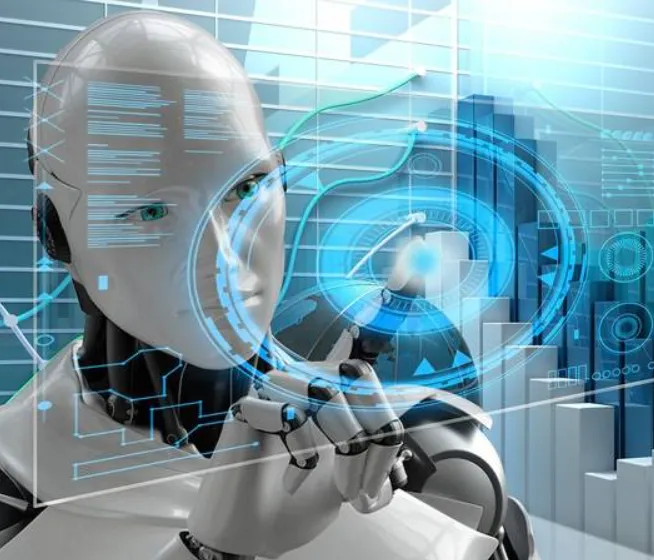In the past, managing the complex systems that power websites and applications was a labor-intensive task. Behind every digital service, there were teams of IT professionals constantly monitoring performance, fixing issues, and ensuring things ran smoothly. This approach, though necessary, was expensive, slow, and reactive, often leading to downtime that frustrated both users and businesses alike.
Now, the landscape is shifting. AI and automation are fundamentally changing how digital infrastructure operates, moving from a reactive model to one that is adaptive, resilient, and largely self-managing. Rather than focusing on fixing issues as they arise, businesses can now prevent problems before they even occur.
From Firefighting to Predictive Maintenance
Historically, infrastructure management felt like putting out fires: responding to alarms, fixing breakdowns, and hoping the problem didn’t reoccur. This cycle consumed valuable resources and stunted growth by diverting attention away from strategic initiatives.
AI-powered diagnostics are transforming this approach. By analyzing large amounts of performance data, AI can understand what “normal” looks like, allowing it to detect minor anomalies before they become major disruptions. This predictive maintenance capability ensures issues are resolved before they even impact users, minimizing downtime and improving operational efficiency.
Automation takes this one step further by acting on AI’s predictions. Instead of waiting for human intervention, automated workflows trigger actions such as cleaning up disk space, expanding server capacity, or rerouting traffic. This real-time response to potential problems allows IT teams to focus on growth and innovation, while the system handles routine maintenance seamlessly.
Achieving More with Less Effort
Optimizing digital infrastructure at scale is a daunting task for humans alone. Balancing performance, resource usage, and costs across shifting demands requires constant adjustments. AI, however, excels at managing this complexity.
AI can analyze real-time traffic patterns and application resource usage, while also taking cost factors into account. It automatically adjusts server resources based on predicted traffic surges or quiet periods, optimizing performance and cost efficiency. It might also optimize database queries or manage content caching, ensuring that users experience fast load times and smooth interactions, while businesses save on operational costs.
Additionally, automation can handle routine tasks such as optimizing images, compressing files, and clearing caches. These tasks, which once took considerable time and attention, can now be handled automatically, ensuring consistent performance without the need for manual oversight. As a result, businesses can focus on more strategic initiatives while enjoying high-performance infrastructure.
Freeing Teams from Repetitive Tasks
One of the most immediate benefits of AI and automation is the reduction in repetitive, time-consuming tasks that often bog down IT teams, marketers, and other professionals. For example, tasks like creating standard content updates, setting up email campaigns, and processing form submissions can consume hours that could be spent on more valuable work.
AI-driven automation tools can take over these workflows. Once a process is defined, AI can execute it consistently and flawlessly. In marketing, for instance, AI can draft social media posts, personalize email campaigns, and send follow-up emails based on user actions. For customer support, AI chatbots can handle basic inquiries instantly, and automated systems can sort and process form submissions, routing complex issues to the right team member.
AI isn’t replacing humans; rather, it is empowering them. By automating repetitive tasks, AI frees up time for employees to focus on creative problem-solving and strategic initiatives. This shift allows businesses to improve the customer experience, innovate faster, and achieve better outcomes.
Building Stronger, More Secure Systems
Downtime and security breaches are costly, and ensuring the resilience and security of digital infrastructure is more important than ever. AI and automation are key to achieving both.
AI improves security by analyzing behavior patterns to detect anomalies that might indicate a new type of threat. Traditional security measures often rely on known threat signatures, but AI can identify unfamiliar attack methods by spotting unusual activity, such as abnormal data access or unexpected file changes. When a threat is detected, AI can trigger automated responses, isolating affected systems or blocking malicious traffic instantly.
Moreover, automation ensures that security tasks like patch management and system configuration are handled reliably. Patches are applied as soon as they are released, and security configurations are continually monitored and corrected if they drift from the desired baseline. Backup routines and disaster recovery processes are also automated, minimizing the risk of human error and ensuring a consistent security posture.
AI and automation also improve resilience by enabling systems to self-heal. In the event of server or data center issues, automated failover systems ensure traffic is rerouted seamlessly, minimizing disruptions. AI can predict potential capacity issues and provision resources before problems arise, ensuring a stable and reliable infrastructure.
Democratizing Technology for All Businesses
One of the most important benefits of AI and automation is how they are making advanced infrastructure management accessible to businesses of all sizes. In the past, large enterprises with deep pockets and dedicated teams were the only ones who could afford sophisticated infrastructure tools. Smaller businesses, particularly SMBs, often struggled with complex setups and the costs of maintaining large IT teams.
Now, AI and automation are leveling the playing field. Modern cloud platforms are integrating intelligent features like automated scaling, security management, and workflow tools into their core offerings. These capabilities are becoming standard and can be accessed through user-friendly interfaces, requiring minimal configuration. This democratization of technology allows SMBs to achieve the same levels of performance, security, and automation that were once reserved for the largest companies. As a result, they can focus on growing their core business without the need for extensive infrastructure management.
Embracing the Future of Digital Infrastructure
The transformation of digital infrastructure through AI and automation is already happening. The benefits are clear: improved uptime, better performance, stronger security, reduced costs, and the ability to free up human talent for more strategic tasks. Companies that fail to adopt these technologies will fall behind competitors who are leveraging them to operate more efficiently and innovate faster.
Adapting to this change requires a shift in mindset. Businesses must see infrastructure not as a collection of hardware but as an intelligent, adaptable system that can evolve with their needs. Embracing AI and automation doesn’t require huge upfront investments, as many cloud platforms now offer these capabilities at affordable rates. The key is choosing the right partners who integrate these technologies deeply and accessibly.
Additionally, upskilling teams is essential. While automation handles routine tasks, humans remain vital for overseeing AI systems and designing effective workflows. Providing training on how to work alongside AI tools will be critical for success in the future.
The future of digital infrastructure is autonomous, intelligent, and self-optimizing. As AI continues to evolve, it will take on even greater roles in predicting and preventing issues, enhancing security, and optimizing performance. For businesses to stay competitive, embracing this transformation is no longer optional—it’s a fundamental necessity for long-term success.







